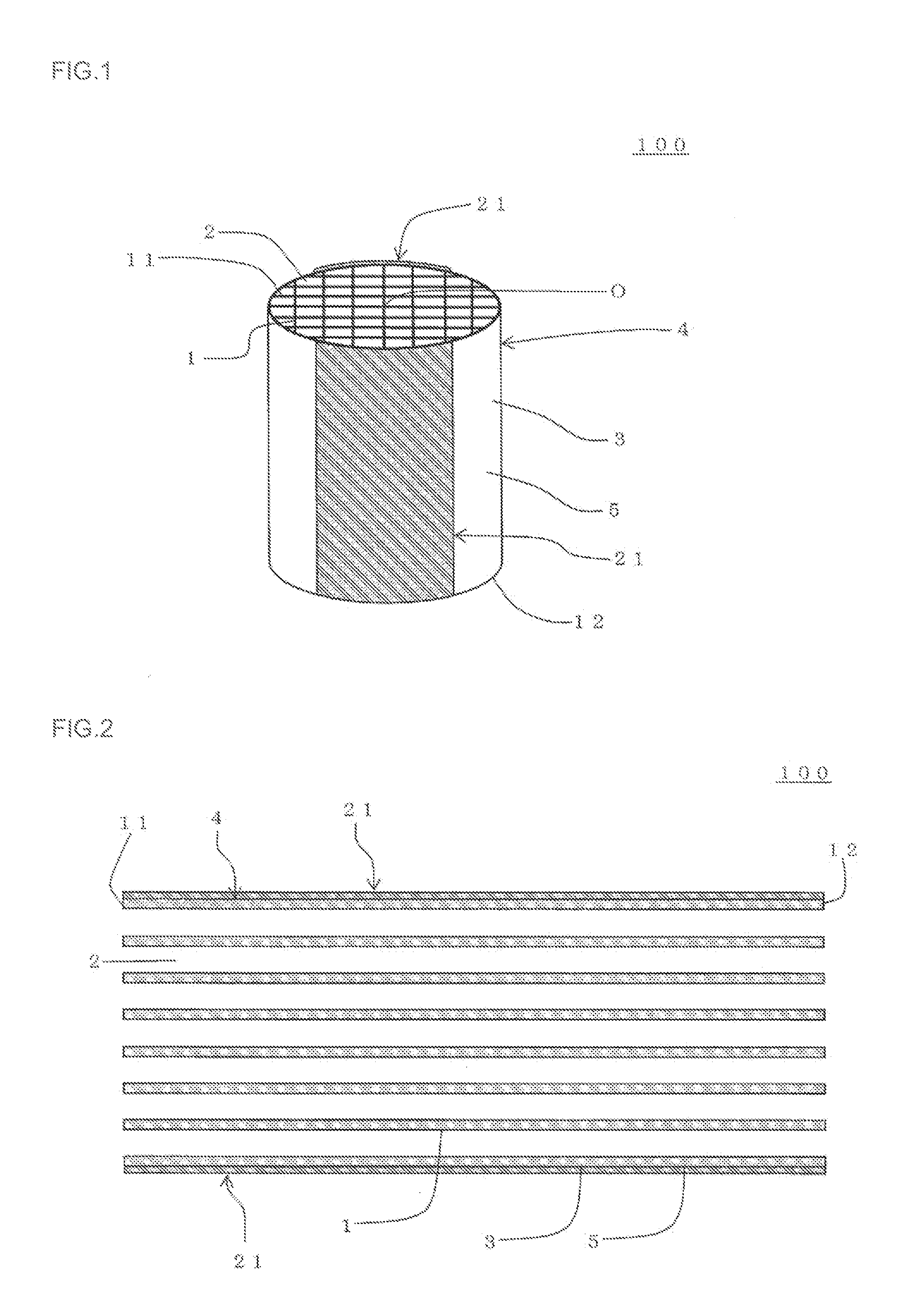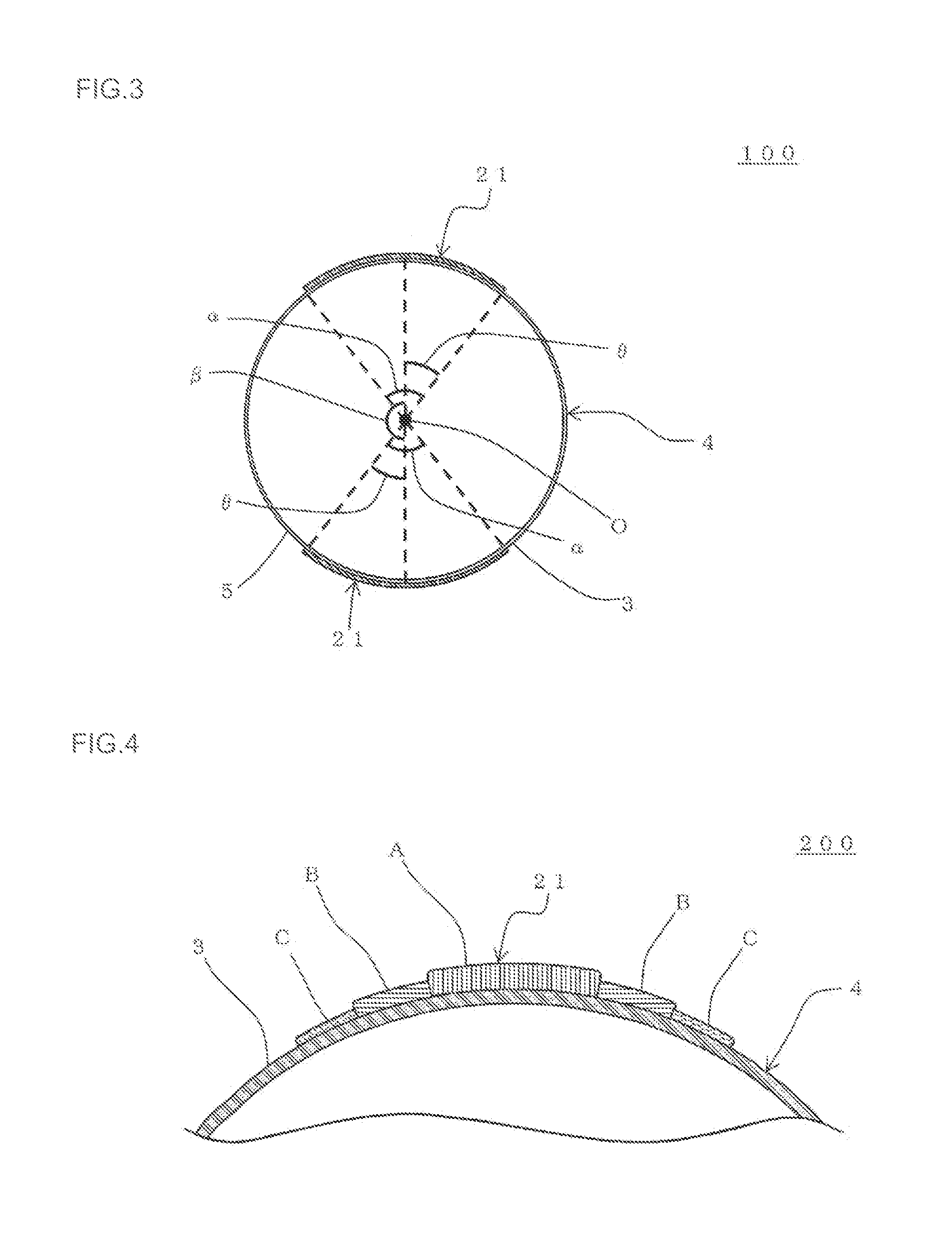Honeycomb structure
a honeycomb and structure technology, applied in the field of honeycomb structure, can solve the problems of difficult unitary joining of the catalyst to the heater, damage to the power source circuit, etc., and achieve the effect of suppressing the bias of heat generation and suppressing the bias of temperature distribution at the time of applying a voltag
- Summary
- Abstract
- Description
- Claims
- Application Information
AI Technical Summary
Benefits of technology
Problems solved by technology
Method used
Image
Examples
example 1
[0119]A silicon carbide (SiC) powder and a metal silicon (Si) powder were mixed together at a mass ratio of 80:20; and hydroxypropylmethyl cellulose as the binder and a water-absorbent resin as the pore former were added to them, and water was added to obtain a forming raw material; and the forming raw material was kneaded by a vacuum kneader to produce a circular columnar kneaded material. The binder content was 7 parts by mass with respect to 100 parts by mass of the total of the silicon carbide (SiC) powder and the metal silicon (Si) powder, the pore former content was 3 parts by mass with respect to 100 parts by mass of the total of the silicon carbide (SiC) powder and the metal silicon (Si) powder, and the water content was 42 parts by mass with respect to 100 parts by mass of the total of the silicon carbide (SiC) powder and the metal silicon (Si) powder. The average particle diameter of the silicon carbide powder was 20 and the average particle diameter of the metal silicon p...
examples 2 to 13
Comparative Examples 1, 2
[0130]Each of the honeycomb structures was manufactured in the same manner as in Example 1 except that “0.5 time the central angle in a cross section perpendicular to the cell extension direction of each of the two electrode sections” and “thickness of the two electrode sections” were changed as shown in Table 1. The “maximum temperature” of the honeycomb structure was measured in the same manner as in Example 1. The results are shown in Table 1.
[0131]From Table 1, it is understood that the maximum temperature of the honeycomb structure is low when the “value of 0.5 time the central angle in a cross section perpendicular to the cell extension direction of each of the two electrode sections of the honeycomb structure” is 15 to 65°. The low maximum temperature of the honeycomb structure means that bias of the temperature distribution in the honeycomb structure is suppressed. Incidentally, the aforementioned maximum temperature of 200° C. or less of the honeyco...
PUM
| Property | Measurement | Unit |
|---|---|---|
| electric resistivity | aaaaa | aaaaa |
| central angle | aaaaa | aaaaa |
| electric resistivity | aaaaa | aaaaa |
Abstract
Description
Claims
Application Information
 Login to View More
Login to View More - R&D
- Intellectual Property
- Life Sciences
- Materials
- Tech Scout
- Unparalleled Data Quality
- Higher Quality Content
- 60% Fewer Hallucinations
Browse by: Latest US Patents, China's latest patents, Technical Efficacy Thesaurus, Application Domain, Technology Topic, Popular Technical Reports.
© 2025 PatSnap. All rights reserved.Legal|Privacy policy|Modern Slavery Act Transparency Statement|Sitemap|About US| Contact US: help@patsnap.com



